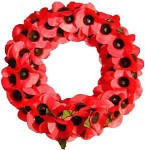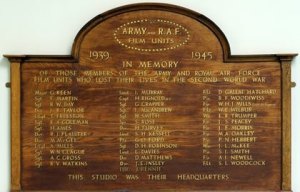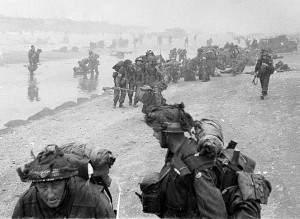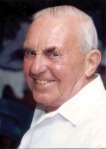NEVILLE SMALLWOOD (1922-2004)
It has long been my contention that, when attempting a heavy character make-up, more use should be made of the materials which have been developed in the last few years – materials which are suitable for the manufacturer of false foreheads, cheeks, noses, chins and so on. Until recently, there were no make-up laboratories in this country but, owing to chiefly to the foresight and planning of Guy Pearce, now retired (films include Clive of India, The Outsider and Hamburger Hill) and the understanding generosity of MGM, a very well stocked and equally well equipped laboratory was built in their Borehamwood Studio (aka Elstree Studios)

Neville Smallwood before and after character make-up.
In order to show the value of this type of work, take the example of a comparatively young woman who, as a story unfolds, has to appear as a very much older woman. Suppose we contrive to make this woman look old with the use of make-up only.
First of all the make-up artist needs to know the main source of light to be directed on the artiste, otherwise they cannot know whether the highlights should be above or below the shadows. This is a point all too often overlooked and I would here stress the importance of co-operation between make-up artist and cameraman, sometimes sadly lacking.
Assume then, a normal shot with main light coming from above the artiste. The make-up artist does his job accordingly and everything looks fine with the lights helping to give the required effect. Then the Director suddenly decides the next shot – to be done immediately – shall be in a dark room in front of a fire. Into the fireplace goes an enormous lamp shining up into the face of our poor artiste – lighting up the carefully placed shadows and leaving the highlights invisible. The result is that our comparatively young woman looks as she did before she was made-up!
Unaltered profile
Another snag is the ‘profile problem’ which is very difficult to overcome. Our artiste looks at herself in the mirror when she is made-up and sees herself as a much older woman, with a satisfied make-up man peering happily over her shoulder – but what has happened to her profile? Nothing! The heavily ridged forehead is not really ridged, the bags under the eyes are not bags, the double-chin is an illusion and, unless an artiste is given absolute preference and every consideration before the camera, sooner or later a fairly close shot of her profile will creep into the picture and the result will be unsatisfactory, even if only to the make-up artist.
I am not suggesting that all and every character make-up should be a seething mass of false features forced onto the poor artiste’s face; rather I am trying to put forward good and sound reasons why every studio should be equipped with a make-up laboratory and have capable technicians who are alive to the possibilities of prosthetics when applying a character make-up, when it is required to show a definite and unmistakeable change in a person’s face, whether for historical accuracy or for ageing – or for any other reason.
The Development of Materials
Various types of putty, wax cotton, wool pads and so on, have been used for years with varying degrees of success. Latex or plastic preparations have been painted on to a face to cause wrinkles through shrinkage when drying – but to my mind, none of these things comes up to the standard required at the present time.
It was found that any non-porous material was useless. Take, for example, a false nose; nothing will stop a hot nose in the heat of intense light from perspiring – and no matter what is used as an adhesive, the perspiration will find its way between the skin and the nose and either form a bubble or blister – or give the artiste the appearance of having a permanently running nose, which is not really desirable! The stand-by man in this case has to wipe the artiste’s nose before each shot and probably has to stick it back on his face, which also damages the fine edges where it blends into the face.
The material had to be made with a skin of its own, also porous, which could be varied to suit the texture of skin to which it had to be applied and it had to be of very light weight, able to give and stretch with the movement of the face and recover its normal shape rapidly. The next problem was to find a material with all these properties which would ‘take’ make-up in the same way as the human skin, without showing differences of tone and colour where skin and false pieces met. In addition, the material had to be such that it could be made in shapes, having really extraordinarily fine thin edges tapering away practically to nothing.
A specially prepared to porous sponge rubber has been used with success, though this needs a special greasepaint, as normal make-up changes colour when applied to rubber. More useful and having similar properties, is a porous sponge plastic, which has advantages over rubber in that it is not affected by any greasepaint and does not perish or deteriorate. The only advantage that rubber has at present is that it cures at a lower temperature than the plastic and consequently, a mould will last longer when used for rubber than it will when used for plastic – a point worth bearing in mind when contemplating a long picture where an artiste may have to be made up many times, as all these things can be used only once each for screen work – although for the stage they may be used many times.
The search for a really good material from which a mould can be made easily and quickly – and which will stand repeated and prolonged periods at high temperatures and pressures – continues and is one of our main problems.
Neville Smallwood’s Credits: Hamburger Hill, The Bounty, Yellowbeard, The Sea Wolves, Lion of the Desert, The Dogs of War, The Lady Vanishes, The Wild Geese, Orca, Aces High, The Likely Lads, Jesus Christ Superstar, Siddhartha, Nicholas and Alexandra, Zeppelin, Unman Wittering and Zigo, Cromwell, A Midsummer Night’s Dream, Casino Royale, Modesty Blaise, The Heroes of Telemark, Genghis Khan, The Long Ships, The World of Suzie Wong, The Vikings, Private’s Progress, Charley Moon, It’s a Wonderful World, They Who Dare, A Christmas Carol, The New Avengers, ITV Saturday Night Theatre, Dr Jekyll and Mr Hyde.
MAKE-UP IN RELATION TO PHOTOGRAPHIC EMULSION – ERNEST TAYLOR (1913-1987)
Make-up is essential to photography in motion pictures because it corrects the irregularities in pigment and texture that discolour the face and prevent it recording faithfully. In still portraiture, retouching can remedy faults but this procedure is not possible with motion film.
The face is made up of a network of tiny blood vessels and pigments which give colouring to the skin. These natural pigments and blood channels are unevenly arrayed all over the face, causing a change of colour and skin texture around the eyes, nose, cheeks and chin.
Photographed without make-up, the face records a mottled effect on the film emulsion. A balance and graded monotone of colours is produced with the use of make-up which cures over-absorption of light and allows the emulsion to reproduce the subject accurately. Its subtle use can also give character to the face.

The changing faces of Alec Guinness in the 1949 Ealing Studios film ‘Kind Hearts and Coronets’
Lighting and Emulsion Characteristics
The camera, lighting and emulsions are far more involved in use than is make-up. For the best photographic results between all factors, the lighting key should be studied carefully. Strong and hard light tends to burn the makeup off the skin, causing it to record chalkily, whilst subdued low key light tends to cause the make-up to record much darker in tone that would be expected.
First-class straight make-up photographs perfectly. With character and corrective make-up patience, practice and experience are required – both on the part of the make-up artist and the photographer. To master the technique a creative imagination, thorough understanding of light and shade and facial contours, all in relationship to photographic reproduction is necessary.
In this way make-up artists, in co-operation with the lighting men, have learned to create beauty and character with almost any subject. Foundation creams, false eyelashes, rouges, eye shading, lip colours and liners, combine to permit the stars to be photographed at their impeccable best!
After experiments with leading technicians on lighting and emulsions, Max Factor evolved panchromatic make-up for use with panchromatic emulsions. It must be applied with painstaking care and thick, crude lines have to be avoided in use with the soft high-lights and low-lights.

‘Scott of the Antarctic’ showing extensive lighting used in Ealing Studios in 1949 – highlighting the need for cooperation between lighting crew and make-up artists.
Straight Make-up
Apart from providing the necessary protective colouration suitable for the various emulsions, make-up is used to give character to the face. Corrections can be made in the shape of the face and various features by careful shading and correctly placed lighting. Results have to be of a flattering nature and any subject that photographs well normally can photograph beautifully with make-up. Lifelike and natural transparency is further achieved by washing the whole of the make-up with a damp wad to eliminate a matt finish which would photograph flat.
Characterisation
The mere addition of beauty aids does not ensure glamour! For example, artificial eyelashes, unless tailored for the individual eye, seldom record naturally. In handling highlights and shadows, both for make-up and lighting, the intricacies of illusory relief have to be understood. The best results can only be achieved by co-operation between the lighting man and the make-up artist.
Colour Photography
All the spectrum of colours cannot be faithfully reproduced on colour film, which is either under or over sensitive to certain colours. The human complexion has a greater proportion of red than any other pigment tints and not only has make-up to be considered but also the surrounding colour scheme, as blues and reds are particularly absorbed and reflected. Colour make-up is at present very much a matter of blending shades to compensate for the peculiarities of the natural skin pigmentation. The aim is naturalness plus the texture to resist fading under the intense arc lighting. Make-up varies with the several colour processes which have different sensitivities to certain colours and co-operation between lighting and make-up departments is again essential. Screen make-up, as an art, is still a matter of trial and error.
Ernest Taylor’s Credits: Moon Zero Two, His Excellency, I Believe in You, Crash of Silence, Secret People, The Man in the White Suit, Pool of London, The Lavender Hill Mob, Cage of Gold, The Magnet, The Blue Lamp, Kind Hearts and Coronets, A Run for Your Money, Whisky Galore, Passport to Pimico, Against the Wind, Saraband, Scott of the Antarctic, It Always Rains on Sunday, The Life and Adventures of Nicholas Nickleby.

























